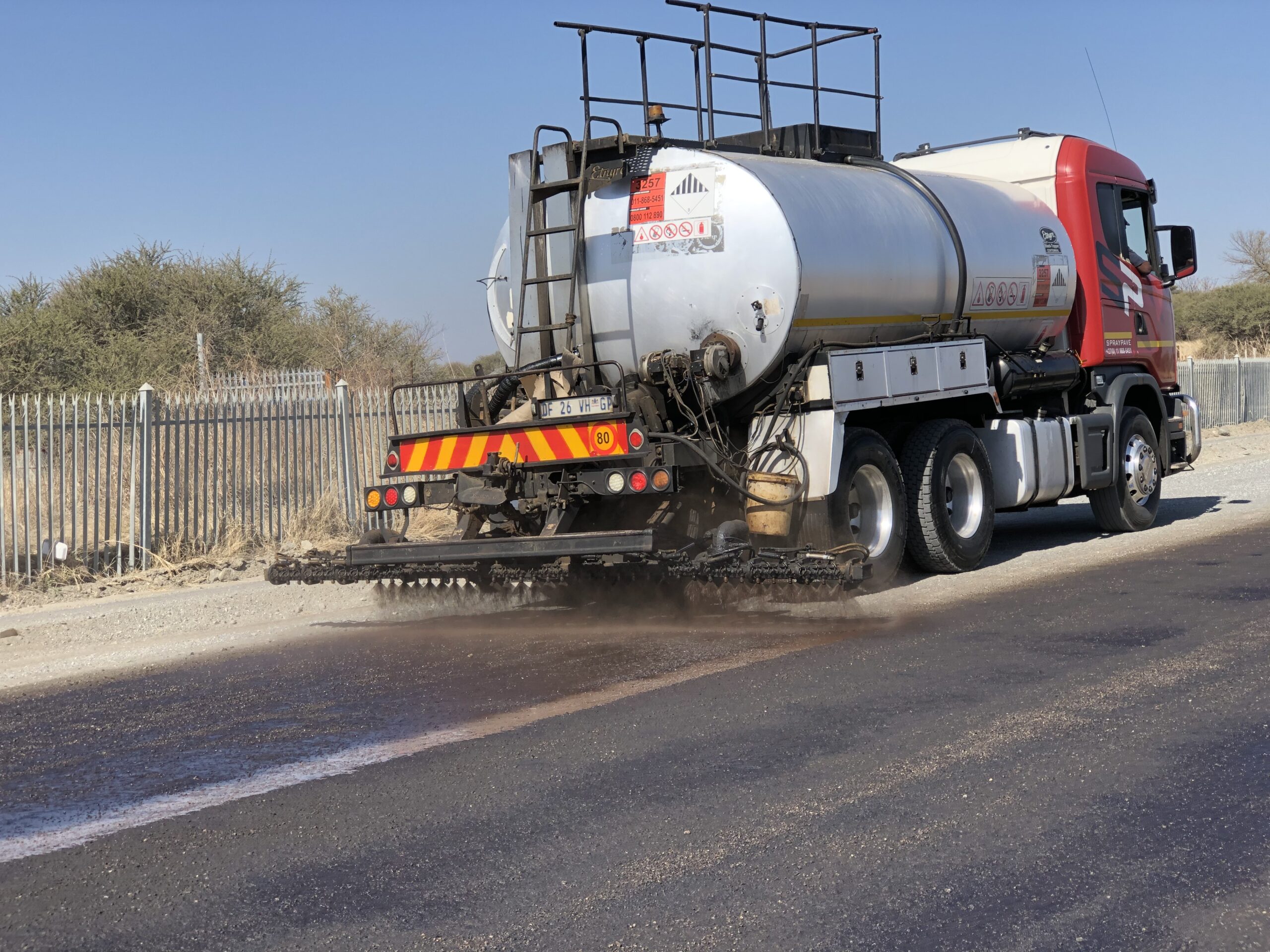Fine dust particles not only affect workspaces and equipment in industries like construction, mining and manufacturing, but they also threaten the health and safety of workers, drivers, pedestrians, and neighbouring communities.
Dust particles 10 microns in size, known as respirable dust, are not visible to the naked eye and can cause serious harm by penetrating the lungs. Dust particles of 100 microns which are visible and known as inhalable dust, can also lodge in the respiratory tract.
Black lung, shortness of breath and respiratory failure are some of the irreversible health effects of ongoing exposure. Driving or operating equipment in dusty environments is also dangerous due to limited visibility.
Dust suppression is achieved through the application of a liquid to prevent inhalable and respirable dust particles from becoming airborne. This generally involves a fine spray application of surface-active ingredients dissolved in water that bond to the airborne particles, weighting them to the ground.
New Solution
AECI SprayPave, a leading manufacturer, supplier and applicator of bituminous binders, emulsions, primes and pre-coats to the road construction industry, has used its expertise in the bitumen field to formulate a waterproof binder known as Dustasolve-10. The product comprises a bitumen emulsion combined with nanotechnology additives.
“Dustasolve-10 is designed to target dust on gravel roads, quarries and mines without the need for complicated layerworks equipment,” says AECI SprayPave director Eddie Jansen van Vuuren, pointing out that simplicity of application is key to the success of this product. “Dustasolve-10 can be applied with a bitumen distributor without the need for a roller. In typical warm South African conditions with base temperatures of 25°C and rising, a road can be opened to traffic as little as one hour after application.”
How it works
Bitumen emulsion comprises varying volume fractions of bitumen droplets dispersed through an aqueous solution with the aid of an emulsifying surfactant. Bitumen emulsions can be easily applied at room temperature without heating equipment.
However, Jansen van Vuuren warns that there are some shortcomings to be aware of when it comes to dust suppression solutions. If the bitumen fraction is too high in the emulsion it forms a layer that can sometimes become tacky, leading to lifting or movement under traffic. Another concern is stability of the treated area in wet climates when bitumen emulsion surface treatments that do not bond with the soil are washed away by rain.
AECI SprayPave has addressed these concerns by incorporating bitumen additives with properties that enable the Dustasolve-10 particles to bond with the soil particles even at low bitumen volume fractions. This both reduces the inhalable and respirable dust particles rising from unpaved roads and provides a strong waterproofing effect that mitigates water damage to the road surface.
Spray applications can be between 1l/m2 and 3l/m2 depending on the surface conditions. Maintenance of the area may require reduced product application rates while achieving further dust control and improving road strength and protection. Depending on traffic on the surface, a maintenance spray may be required one to two weeks after the initial application.
Dustasolve-10 has undergone trials at a mine in Limpopo Province and at three sites of AECI Spraypave’s parent company, AECI Much Asphalt, in Benoni and Eikenhof, Gauteng, and Pietermaritzburg, KwaZulu-Natal. The trials have demonstrated the suitability of the product for dust suppression and helped to determine optimum application rates and respray maintenance requirements in different conditions.
Jansen van Vuuren says trials to date have shown the new formulation to be quick penetrating, fast drying, non-tacky, waterproof, easy to apply, and competitive in price.

Trial application in progress on access road at a Limpopo mine.